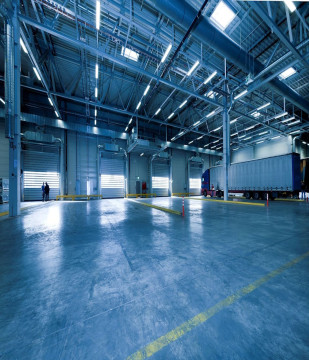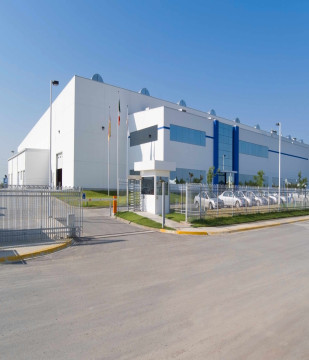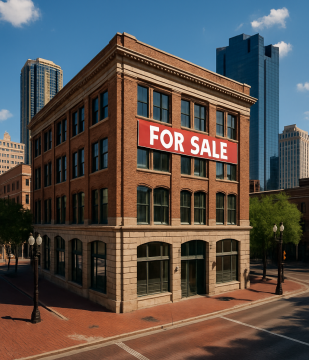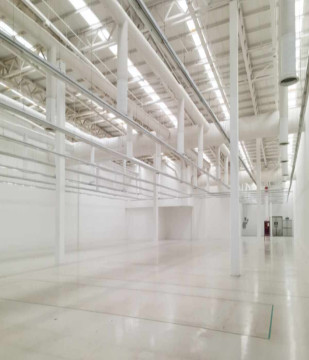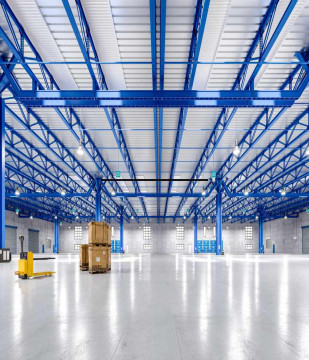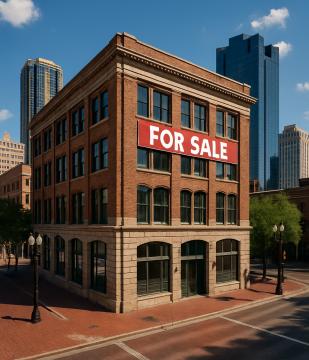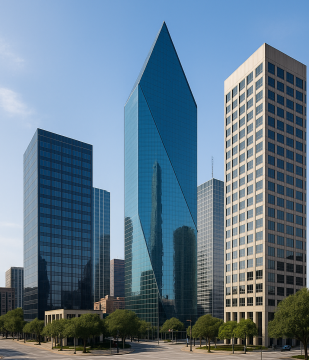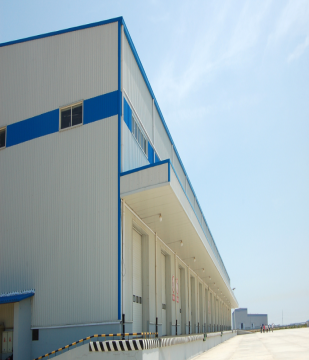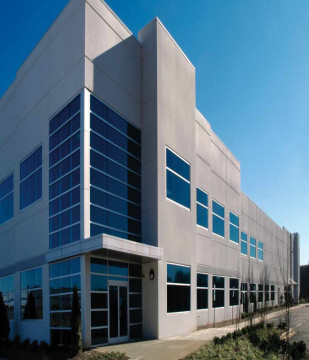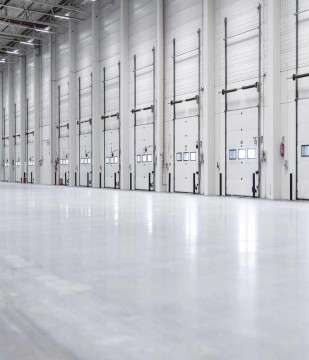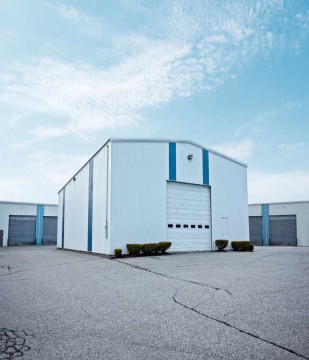Commercial Insurance Costs by State | What CRE Investors Should Know

Terrydale Capital
Nov 17, 2025 22 Min read
 Market Updates
Market Updates
Commercial insurance is not exciting, but it quietly decides whether a deal actually works after closing. Premiums hit your net operating income, influence DSCR, and can be the hidden reason a lender or equity partner gets nervous.
This article walks through how key commercial insurance lines are priced across the United States, where costs are highest and lowest, and how risk and geography shape those numbers. Throughout, think about this in terms of actual deals. When Terrydale Capital structures debt for a property or portfolio, these insurance costs feed straight into underwriting and long term performance.
We will look at:
General liability
Commercial property
Workers compensation
Commercial auto
Cyber liability
Commercial umbrella
1. Big picture: how commercial insurance is priced
Across all coverages, three forces show up over and over:
State environment
Local legal climate
Frequency and severity of claims
State level rules and benefit requirements
Industry and operations
How risky the work is
How much contact you have with the public
How easy it is for someone to get hurt or suffer a loss
Scale and limits
Payroll, revenue, and asset values
Coverage limits chosen
Claims history
Think of it like this: the state sets the floor, the industry sets the slope, and your specific business history moves you up or down that slope.
For investors who work with Terrydale Capital, these three forces translate directly into one thing that matters: how wide your true expense band is around pro forma.
2. General liability insurance
General liability covers bodily injury and property damage that you cause to others. It is one of the most common policies across all types of businesses.
National averages
Typical small business premium is around 1,200 to 1,300 dollars per year for a 1 million dollar limit.
Low risk office type businesses can be far below that.
High risk trades can be several times higher.
State by state differences
Legal climate and lawsuit frequency are the main drivers.
Higher cost states
New York, New Jersey, Pennsylvania, California, Nevada
These states tend to be more litigious, with larger settlements and more claims.
Lower cost states
Maine, North Carolina, Virginia, some interior states
Fewer lawsuits and smaller average judgments keep premiums down.
For the same basic small business, the difference between a cheaper state and an expensive state can be 30 percent or more on annual premium.
Industry impact
Industry risk is the real multiplier.
High risk
Construction trades, roofing, excavation, heavy contractors, bars and some restaurants.
These can pay 10 to 12 times what a low risk consulting firm pays.
Medium risk
Retail stores, light hospitality, basic service businesses with foot traffic.
Low risk
Professional services, software, consultants, many back office financial and real estate firms.
For an investor, this matters most when you:
Own multi tenant properties with high public traffic.
Lease to high hazard users like gyms, bars, restaurants, or contractors.
Higher tenant risk means higher probability of claims, even if you are named only as an additional insured. Terrydale Capital will care about this mix when evaluating sponsor experience and the long term stability of operating expenses.
3. Commercial property insurance
Commercial property insurance covers buildings and contents against events such as fire, theft, and certain weather losses. For real estate investors, this is the line of coverage that matters most.
National averages and state patterns
Across all industries, the average commercial property premium is roughly 1,600 to 1,700 dollars per year per insured business, but that hides a lot of variation.
States with higher average premiums include:
Delaware
North Dakota
Massachusetts
South Dakota
New York
New Hampshire
Nebraska
Connecticut
States with lower average premiums include:
Florida on paper
Georgia
Utah
Maryland
Arizona
Texas
North Carolina
Virginia
The Florida example looks strange. Everyone knows Florida property insurance is painful. The trick is the dataset. Florida has many very small businesses with minimal property limits, so the average premium per policy looks low, but the price per dollar of coverage is still high in wind and flood exposed zones.
For real estate, what actually matters is:
Cost per 100 dollars of insured value
Required coverage such as wind, hail, flood, and business interruption
Deductible structures such as separate wind or hurricane deductibles
Geographic risk
Location risk drives commercial property more than almost anything else:
Coastal states with hurricane exposure
Florida, Texas Gulf Coast, Louisiana, the Carolinas
Tornado and hail regions
Parts of Texas, Oklahoma, Kansas, Missouri
Wildfire zones
Areas of California and the West
Add in local building costs and you get the real picture. Rebuilding a mid rise in Manhattan is not the same as rebuilding a strip center in a small Texas town.
This is why, when Terrydale Capital underwrites a deal, the team does not only look at today’s premium. They also look at the risk profile of the location to judge how volatile those premiums might be over the life of a loan.
Industry and asset type
Property premiums are very sensitive to what you insure:
Small retail store
Roughly 500 to 2,000 dollars per year for a modest inventory and basic build out.
Office based business
Often 750 to 1,500 dollars per year, depending on value of contents.
Restaurant
Often 1,500 to 5,000 dollars or more. Fire risk in kitchens plus more intense use of space.
Manufacturing or industrial
Commonly 5,000 to 10,000 dollars and higher for large facilities and expensive equipment.
For commercial real estate investors, think of each tenant type as a different risk profile sitting inside your building. The building policy and the tenants own policies interact. Lenders like Terrydale Capital will want clear evidence that building and tenant coverages are aligned and adequate.
4. Workers compensation insurance
Workers compensation covers medical costs and lost wages for workers injured on the job. It is priced per 100 dollars of payroll, and rates vary a lot by state and type of work.
National averages and state differences
A rough national average is about 37 dollars per month per employee, or around 440 dollars per year per employee.
Cheaper states are in the low 30s per month per employee.
More expensive states are in the low 40s per month per employee.
Examples:
Lower cost side
North Carolina, Maine, Virginia, some central states.
Higher cost side
New York, New Jersey, Nevada, Pennsylvania, Louisiana, California.
The difference from a cheap state to an expensive one can easily be 25 percent or more for similar jobs. Part of that is medical cost. Part is benefit level. Part is claim frequency.
Industry impact
Industry class is the main driver.
Clerical or office roles
Very low cost. Often only a few dollars per 100 dollars of payroll.
Moderate risk jobs
Retail, light service, some healthcare roles.
High risk jobs
Construction, roofing, logging, heavy manufacturing. These can be ten to fifteen times the rate of a clerical class.
For Terrydale Capital and its clients, workers compensation cost matters when:
Tenants are heavy labor users, such as industrial and construction.
You are underwriting credit risk of a tenant whose margins are tight and workers comp spikes could push them into distress.
While workers comp is not a property line, high risk workforces can be a red flag when you look at the overall stability of a tenant base.
5. Commercial auto insurance
Commercial auto covers vehicles used for business. It can apply to everything from a single pickup truck to a fleet of delivery vans.
National averages
A common figure for small business is around 140 to 150 dollars per month per policy.
Standard vehicles like pickups, vans, and sedans with basic liability often land in the 80 to 120 dollars per month range.
For hire vehicles, such as taxis, shuttles, or certain trucking operations, can be several times higher, even close to 1,000 dollars per month for some risk classes.
State variation
State rules and accident trends drive the spread.
Lower cost states often include rural and less dense regions where accident rates are lower.
Higher cost states include Florida, California, Texas, Michigan, and other states with heavier traffic, higher claims, or complex auto laws.
Even for the same type of truck, you can see a change from around 60 to 80 dollars per month in a cheaper state to 200 dollars or more in a high cost state.
Industry and vehicle use
The risk profile depends on use:
Standard business use
Sales calls, light service, local operations. Lower risk.
Heavy use
Delivery, courier work, trades moving between multiple sites all day. Higher exposure.
For hire and passenger carrying
Very high risk. This is where pricing jumps sharply.
For investors and for Terrydale Capital, commercial auto matters when:
A tenant business model relies on vehicle based operations.
A sponsor is running a multifaceted operating company where large auto losses create debt service pressure.
It rarely decides a real estate deal alone, but it affects the total risk picture.
6. Cyber liability insurance
Cyber policies cover data breaches, hacks, ransomware, and related costs like notification, credit monitoring, legal defense, and sometimes ransoms or business interruption.
Unlike the other coverages, cyber pricing is less about state and more about company profile.
Typical cost levels
For small to mid sized businesses, many surveys show roughly 1,200 to 2,000 dollars per year as a common band.
Some very small, low risk firms might pay under 1,000 dollars per year.
Firms with higher risk profiles can easily pay 3,000 to 7,000 dollars or more annually.
Premiums spiked heavily around 2020 to 2022 due to ransomware claims, then flattened or even dipped slightly as underwriters tightened requirements and more carriers entered the market.
Risk and industry drivers
Cyber pricing focuses on:
Type and volume of data
Payment cards, health records, personal identity data increase risk.
Industry
High risk sectors include financial services, healthcare, retail and ecommerce, and technology companies that host or process data for clients.
Lower risk sectors include construction, many local service businesses, and firms with little stored customer data.
Security posture
Use of multi factor authentication, encryption, backup discipline, endpoint protection, and employee training.
For commercial real estate, cyber seems distant, but:
Property management platforms, online leasing systems, and tenant portals create data exposure.
Some lenders and capital partners now ask about cyber coverage where operations involve large customer or tenant databases.
Terrydale Capital operates in a world where lenders and investors care more each year about operational resilience, including cyber. While this is not a core CRE line like property insurance, it is showing up more often in risk discussions.
7. Commercial umbrella insurance
Umbrella coverage sits on top of primary policies such as general liability, commercial auto, and in some cases employer liability. It adds an extra layer of protection if a large claim exhausts the underlying limits.
Cost levels
For small and mid sized businesses:
A typical 1 million dollar umbrella costs about 900 dollars per year on average.
Many pay under 100 dollars per month for the first 1 million.
Each additional 1 million of umbrella limit often adds around 40 dollars per month.
This means a 5 million dollar umbrella might land in the 2,500 to 3,000 dollar per year range for a mid risk business.
How state and industry affect umbrella
Umbrella pricing depends heavily on:
The risk profile of the underlying policies
If your general liability and auto are high risk, your umbrella is priced as high risk.
Location
Businesses in places with large jury verdicts or frequent big claims will see higher umbrella pricing.
Industry
Low risk offices might pay 40 to 60 dollars per month for 1 million.
Retail and hospitality might be around 65 to 75 dollars per month.
Construction, landscaping, and higher risk trades often sit in the 85 to 100 dollars per month band or above for the first 1 million.
For investors and for Terrydale Capital, umbrella insurance is often the cheapest way to gain extra protection against a rare, catastrophic loss. Many loan covenants and partner agreements in higher risk asset classes effectively expect sponsors to carry higher liability limits. Umbrella coverage is usually how they meet those expectations at a reasonable cost.
8. What this means for investors and where Terrydale Capital fits in
All of this data boils down to a few practical points for borrowers and investors who work with Terrydale Capital.
Insurance is not a flat line in a pro forma
It moves with state law, loss history, and macro risk such as storms or litigation trends. What looks fine at year one can drift higher and squeeze DSCR a few years into the hold.
State choice and asset mix matter more than most people admit
The same building in two different states can sit in completely different cost environments for property and liability coverage. A multi tenant center with three restaurants and two bars in one state has a different risk profile than a medical office building in another.
Industry risk inside your building is real risk to you
Tenants with high hazard operations can drive claims where landlords get named, claims history gets messy, and premiums jump. The rent premium that tenant pays might not be worth the long term volatility.
Umbrella and better structure are cheap ways to de risk
Properly structured liability limits, plus umbrella coverage, can protect equity and keep lenders comfortable relative to loan size.
Cyber and operational risk are creeping into real estate conversations
They are not yet the main event, but the direction is clear. The more that property operations go digital, the more cyber risk and cyber insurance will matter to sponsors and lenders.
Terrydale Capital lives in the middle of all of this. When the team structures debt and capital for a deal, they are not only hunting for the lowest rate. They are looking at the total risk stack. That includes property exposure, tenant mix, insurance structure, and how those costs will behave across the life of the loan.
A smart investor does not treat insurance like a checkbox. They treat it like another capital item that can support or undermine the deal. Terrydale Capital can help translate these insurance realities into better leverage, more resilient structures, and cleaner conversations with both lenders and equity.
Partner With Terrydale Capital for Your Debt Financing Needs
When it comes to debt financing, understanding the right timing, process, and options is crucial. At Terrydale Capital, we provide a comprehensive range of commercial loan solutions tailored to meet your business's unique needs.









